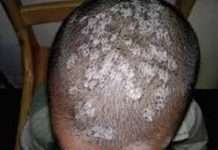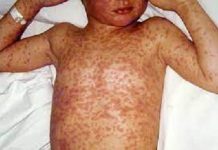
Tetanus is a severe and fatal disease, caused by the exotoxin produced by the bacterium Clostridium tetani. Its symptoms include rigidity and convulsive spasms of the skeletal muscles. The muscle stiffness usually starts in the jaw (lockjaw) and neck and then becomes generalised.
In 1884, tetanus was produced in animals by injecting them with samples of soil. In 1889, Kitasato Shibasaburo isolated the organism from a human and showed that it produced disease when injected into animals. He would later report that certain antibodies could contain the toxin.
In 1897, Edmond Nocard demonstrated the protective effect of passively transferred antitoxin. Eventually, a technique for deactivating tetanus toxin with formaldehyde was developed in the early 1920s. This led to the development of tetanus toxoid in 1924.
The C. tetani bacterium is a spore-forming, gram-positive, anaerobic rod. The spores are very resistant to heat and the usual antiseptics. They can survive autoclaving at 249.8°F (121°C) for 10 to 15 minutes. The spores are also moderately resistant to phenol and other chemical agents.
The spores are widely distributed in soil and in the intestines and faeces of animals such as horses, sheep, cattle, dogs, cats, rats, guinea pigs and chickens. In agricultural areas, a significant number of human adults may harbour the bacterium.
- tetani produces two exotoxins, tetanolysin and tetanospasmin. Tetanospasmin is a neurotoxin and causes the clinical manifestations of tetanus. C. tetani usually enters the body through a wound. In the presence of anaerobic conditions, the spores germinate. Toxins are produced and distributed through blood and lymphatics.
The characteristic clinical manifestations of tetanus are caused when tetanus toxin interferes with the release of neurotransmitters, blocking inhibitor impulses. This leads to unopposed muscle contraction and spasm.
Based on clinical findings, three different forms of tetanus have been described. The most common type (more than 80 per cent of reported cases) is generalised tetanus. The disease usually appears with a sliding pattern. The first sign is trismus, or lockjaw, followed by stiffness of the neck, difficulty in swallowing, and rigidity of abdominal muscles. Other symptoms include high temperature, sweating, high blood pressure, and irregular rapid heart rate.
Localised tetanus is an uncommon form of the disease in which patients have incessant contraction of muscles in the same anatomic area as the injury. These contractions may continue for many weeks before gradually subsiding. Localised tetanus may precede the onset of generalised tetanus but is generally milder.
Cephalic tetanus is a rare form of the disease, occasionally occurring with otitis media in which C. tetani is present in the flora of the middle ear or following wounds to the head. There is involvement of the cranial nerves, especially in the facial area.
Neonatal tetanus happens in infants born without protective passive immunity because the mother is not immune. It usually happens through infection of the unhealed umbilical stump, particularly when the stump is cut with an unsterilised instrument. In neonatal tetanus, symptoms usually appear from four to 14 days after birth, averaging about seven days.
The diagnosis of tetanus is completely clinical and does not depend upon bacteriologic confirmation. C. tetani is recovered from the wound in only 30 per cent of cases and can be isolated from patients who do not have tetanus. Active immunisation with tetanus toxoid should begin or continue as soon as the person’s condition has stabilised.
Transmission is mainly by contaminated wounds. Recently, a higher percentage of tetanus cases had minor wounds, probably because severe wounds are more likely to be properly managed.
Tetanus toxoid is combined with diphtheria toxoid as diphtheria and tetanus toxoid (DT) vaccine or tetanus and diphtheria toxoid (Td [Tenivac and Tdvax]) vaccine. Tetanus toxoid is also combined with both diphtheria toxoid and acellular pertussis vaccine as DTaP (Infanrix and Daptacel) or Tdap (Boostrix and Adacel) vaccines. Td contains reduced amounts of diphtheria toxoid compared with DT. DTaP and Tdap contain the same pertussis components, but Tdap contains a reduced quantity of some pertussis antigens and diphtheria toxoid. Boostrix contains a reduced quantity of tetanus toxoid compared to Infanrix.
Children younger than age seven years should receive DTaP vaccine or DT vaccine (in instances where the pertussis vaccine component is contraindicated or where the physician decides that pertussis vaccine is not to be administered). Persons age seven years or older should receive Td vaccine or Tdap vaccine, even if they have not completed a series of DTaP or DT (Tdap would be off-label for children age seven through nine years, but is still recommended by ACIP). Tdap (Boostrix) is approved for persons age 10 years or older; Tdap (Adacel) is approved for persons age 10 through 64 years.













